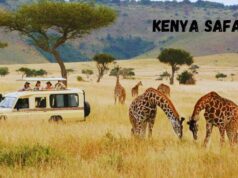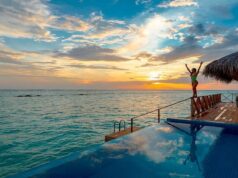The Manaslu Circuit Trek is one of Nepal’s most beautiful and remote trekking routes. Known for its pristine landscapes, rich cultural experiences, and breathtaking mountain views, this trek circles the majestic Mount Manaslu, the eighth-highest peak in the world.
Unlike more commercialized treks like the Annapurna or Everest Base Camp, the Manaslu Circuit offers a more tranquil and authentic Himalayan experience. This guide will take you through a detailed itinerary, covering essential information, day-by-day activities, and tips for completing this adventurous journey.
Permits Required for the Manaslu Circuit Trek
Before embarking on the Manaslu Circuit Trek, you must secure several permits due to its restricted nature. These permits include:
- Manaslu Conservation Area Permit (MCAP): Costs around USD 30 for non-SAARC nationals and NRS 1,000 for SAARC nationals.
- Annapurna Conservation Area Permit (ACAP): Also priced at approximately USD 30 for non-SAARC and NRS 1,000 for SAARC nationals.
- Restricted Area Permit (RAP): For September to November, this permit costs USD 100 per week, with an additional USD 15 for extra days. From December to August, it costs USD 75 for the first week and USD 10 per additional day.
These permits ensure that trekkers respect the fragile environment and cultural heritage of the Manaslu region.
Best Time to Complete the Manaslu Circuit Trek
The best time to trek the Manaslu Circuit is during the spring (March to May) and autumn (September to November) seasons. These months offer the best weather conditions, with clear skies and pleasant temperatures.
Monsoon (June to August) brings heavy rainfall, making trails muddy and dangerous, while winter (December to February) can be extremely cold, especially at higher altitudes.
Manaslu Circuit Trek Cost
The cost of the Manaslu Circuit Trek can vary based on factors like the duration, mode of travel, and services included. On average, it ranges from $800 to $1,500 per person for a standard trek. This includes necessary permits, such as the Manaslu Conservation Area Permit (USD 30), the Restricted Area Permit (USD 100 for the first week), and the Annapurna Conservation Area Permit (USD 30).
Expenses also cover accommodation, meals, guide and porter services, transportation, and gear rental if needed. Trekkers should also consider personal expenses and tips, which can add to the overall budget.
Day-by-Day Manaslu Circuit Trek Itinerary
Day 1: Arrival in Kathmandu
Your adventure begins in Kathmandu, Nepal’s bustling capital. You’ll spend this day preparing for the trek, attending a briefing session, and purchasing any last-minute trekking gear.
Day 2: Drive from Kathmandu to Soti Khola
A scenic 8-9 hour drive through lush hills, terraced fields, and traditional villages takes you to Soti Khola, the starting point of your trek.
Day 3: Soti Khola to Machha Khola
Your first day of trekking involves a gradual ascent along the Budhi Gandaki River. Expect to walk for about 6-7 hours through forests and villages before reaching Machha Khola.
Day 4: Machha Khola to Jagat
Continuing along the riverside, you’ll pass through rocky trails, cross suspension bridges, and ascend to the village of Jagat, a picturesque spot where permits are checked.
Day 5: Jagat to Deng
This day’s trek takes you through terraced fields, waterfalls, and into higher altitudes. The trail becomes more rugged as you pass through the Gurung village of Deng.
Day 6: Deng to Namrung
As you ascend higher into the Nubri Valley, the views of the mountains become more prominent. Namrung is a beautiful village with its stone houses and traditional prayer wheels.
Day 7: Namrung to Samagaon
This day involves a longer trek, but the views of Mount Manaslu and surrounding peaks are truly stunning. Samagaon is a major stop, offering opportunities for cultural exploration.
Day 8: Acclimatization Day at Samagaon
To avoid altitude sickness, you’ll spend this day acclimatizing. You can explore Birendra Tal or hike up to the Manaslu Base Camp for breathtaking glacier views.
Day 9: Samagaon to Samdo
The trek to Samdo brings you closer to the Tibetan border. Samdo is a traditional village where you’ll experience Tibetan-influenced culture and lifestyle.
Day 10: Samdo to Dharmashala
This leg of the trek leads to Dharmashala, the base camp for Larkya La Pass. The walk becomes more challenging as the altitude increases.
Day 11: Dharmashala to Bimthang via Larkya La Pass
On the most challenging day of the trek, you’ll cross the Larkya La Pass at 5,160 meters. The views from the pass are spectacular, with panoramic vistas of Himlung Himal, Cheo Himal, and Kang Guru.
Day 12: Bimthang to Dharapani
From Bimthang, you’ll descend through alpine forests and picturesque landscapes, passing rivers and villages until you reach Dharapani, marking the end of the trekking trail.
Day 13: Drive from Dharapani to Kathmandu
After breakfast, you’ll drive back to Kathmandu, taking in your last glimpses of the Himalayas. Once back in the city, it’s time to celebrate the completion of your trek.
Physical Preparation and Difficulty Level
The Manaslu Circuit Trek is considered moderately difficult, requiring good physical fitness and previous trekking experience. The trek involves long walking days, steep ascents, and high altitudes, with the highest point being Larkya La Pass at 5,160 meters.
Acclimatization is crucial to avoid altitude sickness. Training that includes hiking, cardio, and strength exercises will help prepare for the challenges.
Packing List for the Manaslu Circuit Trek
Packing properly is essential for the Manaslu Circuit Trek. Key items include:
- Clothing: Layers of warm clothing, rain gear, trekking boots, gloves, and thermal wear.
- Trekking Gear: Backpack, sleeping bag (suitable for low temperatures), trekking poles, and headlamp.
- Accessories: Water purification tablets, camera, personal hygiene items, and first aid kit.
Tips for a Successful Manaslu Circuit Trek
- Acclimatize properly to avoid altitude sickness.
- Stay hydrated and eat well to maintain energy levels.
- Hire a guide or porter for assistance with navigation and carrying heavy loads.
- Prepare for weather changes, as the conditions can vary drastically, especially at higher altitudes.
Accommodation and Food on the Trek
Accommodation on the trek is typically in teahouses, basic lodges run by locals. These provide a bed, simple meals, and an opportunity to connect with fellow trekkers. Meals usually consist of traditional Nepali dishes such as dal bhat (rice and lentils), noodles, soups, and vegetables. Although the food is basic, it is nourishing and keeps you energized for long trekking days.
Cultural Experiences Along the Trek
The Manaslu region is rich in cultural diversity. You will pass through villages inhabited by various ethnic groups, including Gurungs and Tibetans. Monasteries like Mu Gompa and Serang Gompa offer a glimpse into the spiritual lives of the locals. Along the trail, you’ll also encounter prayer wheels, mani walls, and chortens that reflect the region’s strong Buddhist influence.
Conclusion
The Manaslu Circuit Trek is an unforgettable journey through remote Himalayan terrain, blending cultural immersion with stunning natural beauty. With proper preparation, permits, and guidance, this trek offers a unique adventure that rivals more popular routes like Everest and Annapurna. Completing the Manaslu Circuit is a rewarding experience for anyone seeking an off-the-beaten-path trek in Nepal.








